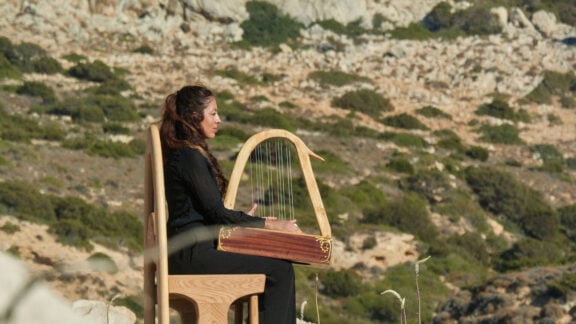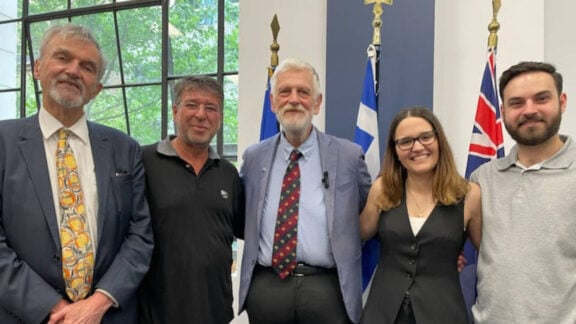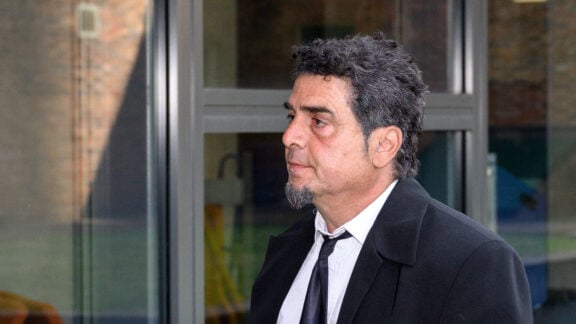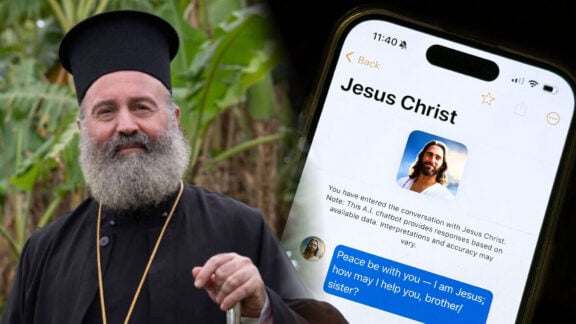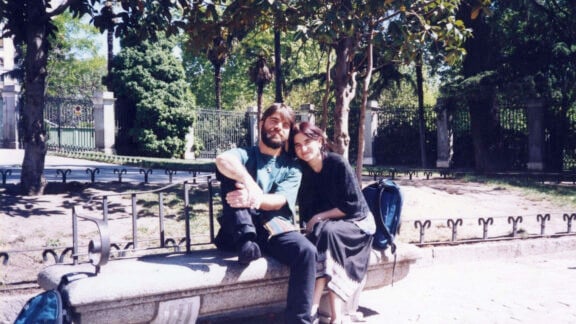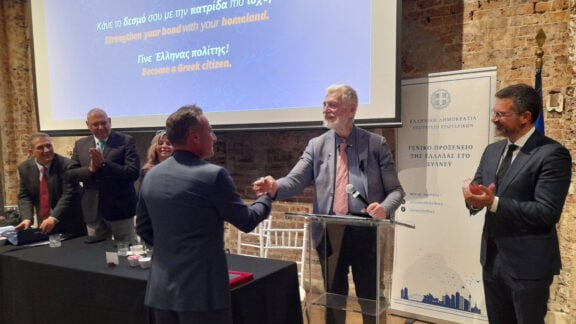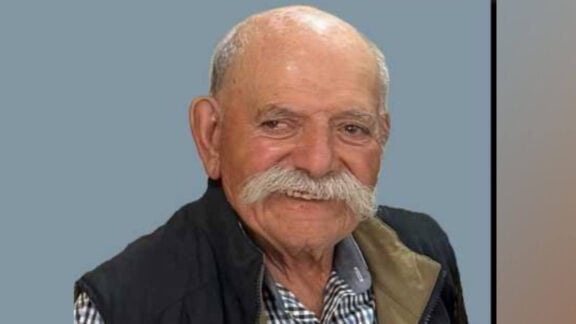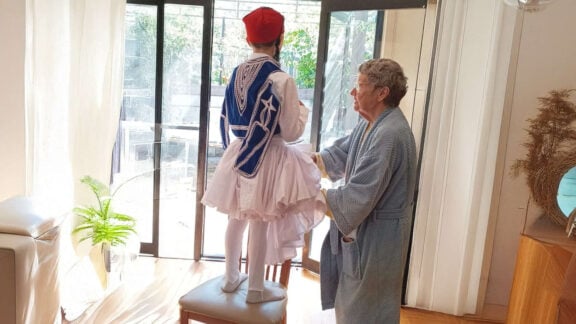Last Sunday the commemorative event organised by Pnevmatiki Estia Ellinidon at the Hellenic Museum, Melbourne’s Greek community honoured the history of the Begona, a ship which on February 12, 1957 transported 900 Greek brides to Australia.
Part of the story highlighted by Adelaide-based historian, Panagiotis Fotakis, was dedicated to the life of Catherine (Katerina) Plessa-Cramer, the first Greek woman to set foot in Australia.
Cramer was born in the court of Ali Pasha. She was engaged by her mother to Ioannis Kolettis (later a prime minister of Greece), and she then left to pursue her freedom. Katerina met Lord Byron during the Greek War of Independence and later fell in love with, and married the veteran of the Battle of Waterloo, General Cramer. They boarded a ship carrying 300 convicts, on September 28, 1835, for Sydney.

CATHERINE PLESSA-CRAMER
The first reference of ‘Ekaterina Plessa’ was recorded by the Australian historian and former Australian ambassador to Athens, Hugh Gilchrist, who mentions that she was born in the village of Plesivitsa (present-day Plaisio) in 1809 and died in 1910. Her mother Vasiliki, Gilchrist writes was known for her beauty, and at the age of 14, was married to Georgios Plessas, a merchant from Serres. Plessas was often away. Vasiliki fell pregnant when, one one of Plessas’ absences, Ali Pasha’s son Mukhtar cast eyes on her and fell in love. Mukhtar took her to his harem at hos father’s court. She gave birth to a girl, Ekaterini and then a son, Kostoula.
Gilchrist cites historian Psallidas, who writes that Mukhtar was obsessed with Vasiliki, and his jealousy saw him lock her up in a house near Agia Marina. Mukhtar even threatened her husband not to approach her again because he would kill him.
As Ekaterini grew up, Mukhtar began to show an unhealthy interest towards her. So, to save her, Vasiliki betrothed her daughter Ekaterini to Ali Pasha’s doctor Ioannis Kolettis. She was only 12. Regardless, even after the engagement, Ekaterini was forced to live next to Mukhtar.

Historian, Antonis Goudas, alternatively claims that Mukhtar engaged ‘Katerina’ to Kolettis to keep the doctor close. Kolettis later became Prime Minister of Greece. Katerina as she is also referred, managed to escape to Missolonghi after the death of Ali Pasha and his son Mukhtar. It was there that she met Lord Byron, who was preparing with an array of Greeks to take on the Turks in the Greek War of Independence. She developed a deep bond with Byron, and it is said that Katerina was one of the last people to see him alive.
Following Lord Byron’s death, she found herself on the islet of Kalamos, off the coast of Etoloakarnania, where she met, fell in love with and married the Commander of the island’s British garrison, Captain James Henry Cramer in 1827.
In the bilingual Marriage Certificate writes: “… we married the British commander of the island of Kalamos, Iakovon Enrikon Kramer, and the Greek Katerina Georgia Plaessa, in a church ceremony, with the possibility of an erotic and unadulterated life”.
James and Katerina, (Catherine as she later Anglicised her name), lived together for four decades until her husband’s death. They had eleven children born on Corfu, in Ireland and Australia. Catherine died in Sydney in 1907 and was buried in Waverley Cemetery, in the eastern suburbs of the city.

900 BRIDES SAIL INTO THE UNKNOWN FOR THE PROMISE OF LOVE
Plessa’s courage, more than a century prior to the Begona’s 1957 arrival, set the tone for other Greek women who sailed into the unknown for love.
On the same boat was a eight-year-old boy with his mother, now historian and teacher Panagiotis Fotakis, who came from Adelaide to speak at the Melbourne event.
“It was May 1957, when in Port Philip Bay, the Spanish ship Begona docked carrying the hopes of 900 Greek young women, who were arriving in Australia with a suitcase of dreams, for a better tomorrow in hope of meeting their future husbands.”
Greece’s male was dwindling, Many has started to migrate during the German occupation, and then the Greek Civil War. Belgium, America and Australia were the main destinations for those looking to build a new life.
“Hard working and determined Greek immigrants had found work and made fortunes but their integration into the local society was not easy. Greek matchmakers took action, matchmaking them with poor girls from the Greek countryside.
“A photo of the bride-to-be was enough. And that’s how the biggest ‘proxenio’ in history started!,” Fotakis said. Girls from every corner of Greece sailed to this unknown land with a photo of the groom in their hand.
Arriving at their destination, they were greeted by their future husbands and with a signature on a rough bit of paper, they ensured their stay in the country until the wedding took place.
“Some of these brides were engaged before the groom left for Australia. Others did not know the groom personally, but had exchanged photos.
“Finally, there was a third category, the girls who left Greece with their families in search of a new life in Australia. They found a groom through a matchmaker when they arrived in their new homeland,” Fotakis said.
“When we arrived in Melbourne, there were about 4,000 people waiting at the port. Half of them were single men trying to get on the boat from the stairs and shouting ‘I want a wife, come marry me….’ while others were disappointed, because the photo they had was not the same woman who was waiting for them at the port. Of course, the same thing happened with the girls. Some girls started tearing the pictures, throwing the flowers and chocolates into the sea.
“Of course, they had the opportunity, if they did not want to stay in Australia, to return to Greece in a month. Some of the girls didn’t want to come to Australia at all. They were also very young, 16-17 years old, and they were always locked in the cabin. Some came to take them out of the cabins, because they couldn’t get out on their own. They were so sad that they were not eating at all and were very weak…”
The historian said he collected information on the 900 brides that arrived in Australia to see what happened to them.
“It is a shocking story that has not been told in its entirety”, he said.
“I wanted this research, this historical project to be successful because the alternative is that all these stories and information will be lost forever, and our future generations will never learn about their Greek heritage.”

